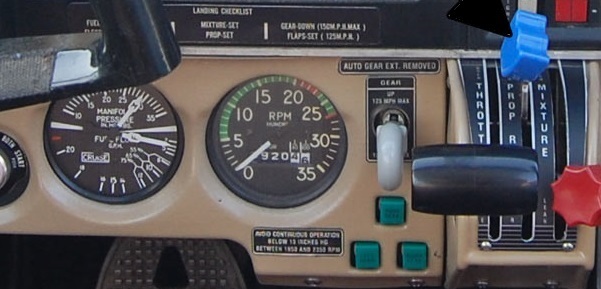We discussed this briefly on Zoom a week or two ago. Some aircraft have an RPM limitation, either yellow or red at approx 2100-2300 in the middle of the green arc. Ones I know of:
It looks like it’s certain Lycoming O-360s and/or paired with certain airframes that cause some kind of vibration or harmonics. Does anyone know any more about this?
Examples:


TB10 also… no idea why though.
Capitaine wrote:
It looks like it’s certain Lycoming O-360s and/or paired with certain airframes that cause some kind of vibration or harmonics. Does anyone know any more about this?
I believe it is due to the combination of engine and propeller. We used to have the same issue with a PA28 with a Lyc. O-360 engine. During an engine overhaul it turned out that the engine version was actually intended for constant speed propellers. The crankshaft was changed and then the rpm restriction was removed.
Airborne_Again wrote:
I believe it is due to the combination of engine and propeller.
Yes, critical speeds are typically due to resonant torsional crankshaft stresses or propeller blade stresses being created by engine torque pulsation. Once you move away from the critical speed the excitation frequency of those torque pulses no longer lines up with the peak response frequency associated with the stiffness of the crankshaft and propeller mass so the amplitude of the vibration in the assembly and the associated cyclical stresses are much reduced.
If I understand correctly, four cylinder aircraft engines have more issues than six cylinder engines. Geared engines and Diesels are problematic but may utilize torsional springs or dampers in the driveline to mitigate their issues, taking on maintenance cost to do so.
Lycoming four cylinder engines such as the O-360
have simple one piece crankshafts.
My Bolkow Junior has a non-standard metal prop on the O200, and a zone just under max RPM to “avoid prolonged operation”.
It’s for prop vibration.
(Prop was from an O200 Bulldog, and is documented.)
Capitaine wrote:
Does anyone know any more about this?
TSIO 360-E has a limitation 2000-2200RPM when above 32’MP with two blade propeller.
As far as I know during test flights and certification they found some higher vibrations within that range so the limitation was introduced and that’s it.
It is cancelled when one replaces the prop to three blades.
In fact – that is my favourite RPM range. I cruise at 55% 2200 and 26-28’MP depending on altitude.
Sometimes 45% 2100RPM.
I asked Hartzell once, what length of time between prop overhauls, would worry them, if the prop were held in the middle of the “avoid” speed range. The answer was many hours, not minutes. The point is not to cruise in this RPM range, but passing through it accelerating, or decelerating is okay, try not to pause there. Do pay attention thought, as some airplanes will rest in this RPM range for a while when the power is reduced to idle at cruise speed. It may be necessary to coarse the prop a little to slow it down (which is a good idea if you actually have to glide for real anyway).
For anyone who wants to research this more, find the type certificate data sheet for the propeller of interest, and read “note 9” for that prop, it will describe such limitations, if applicable.